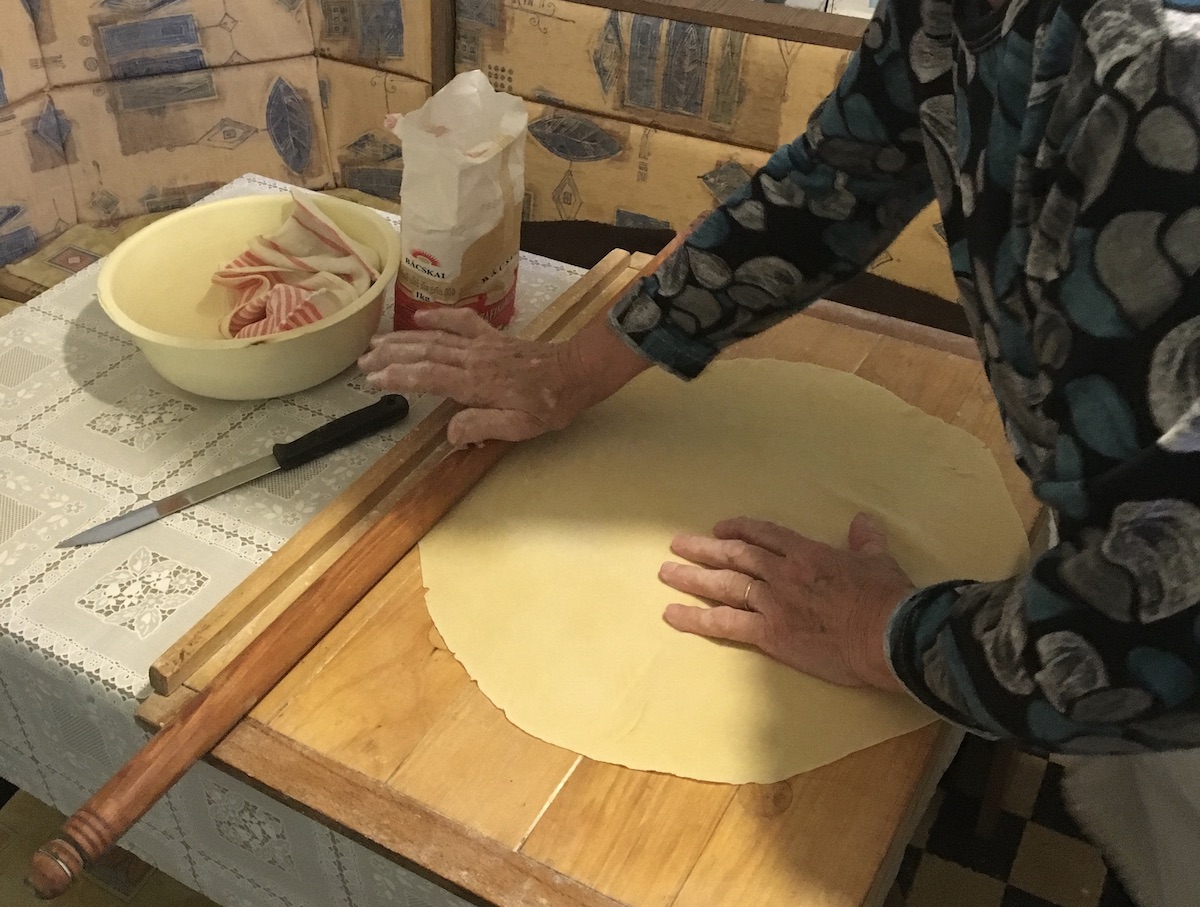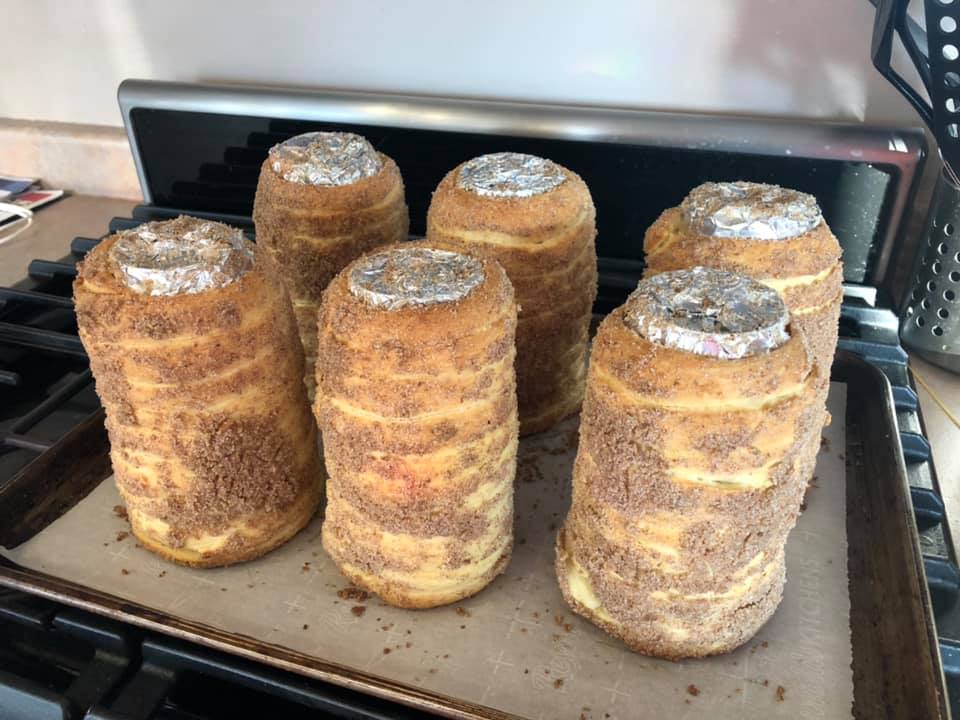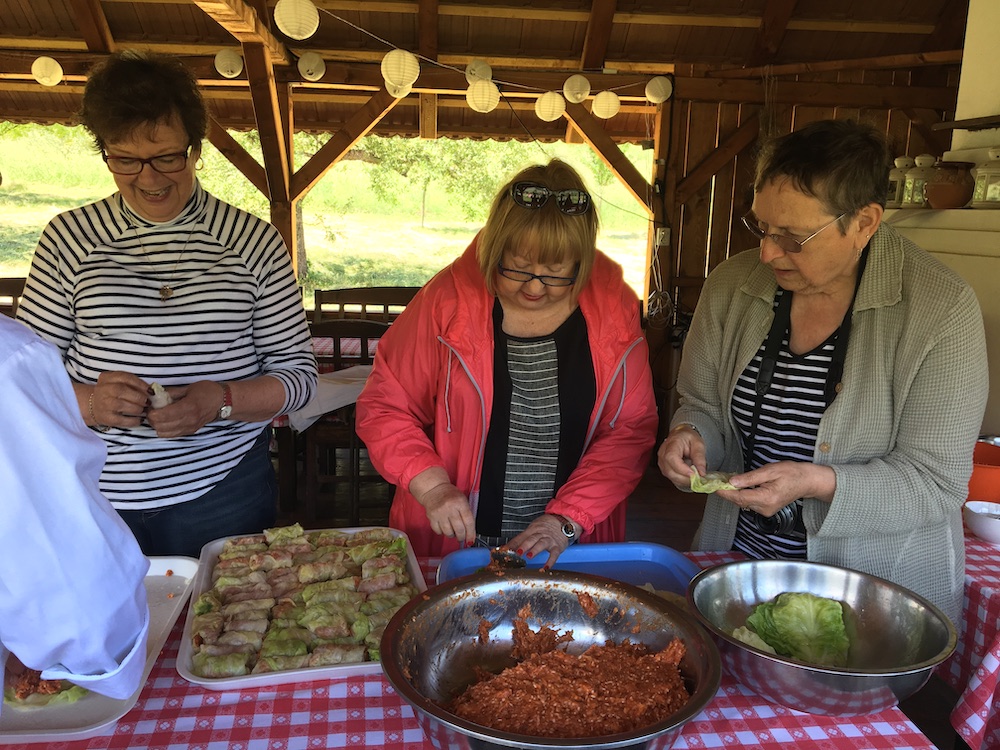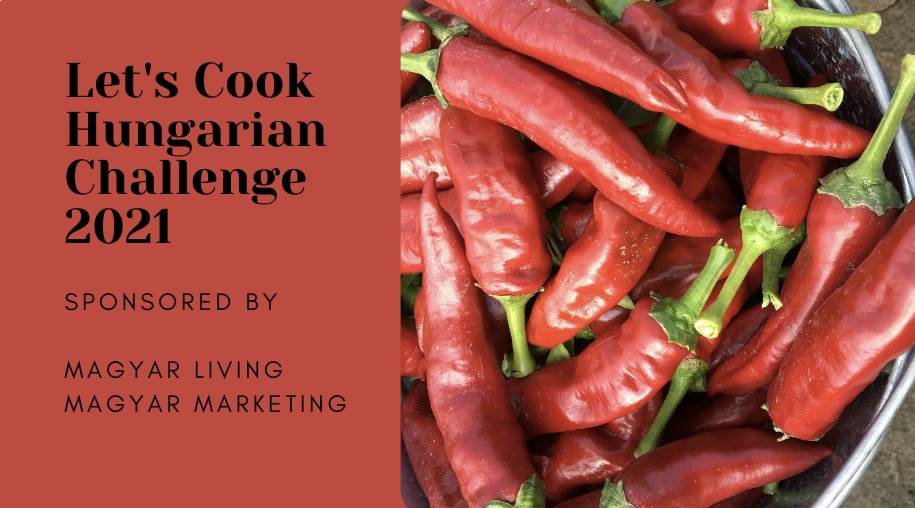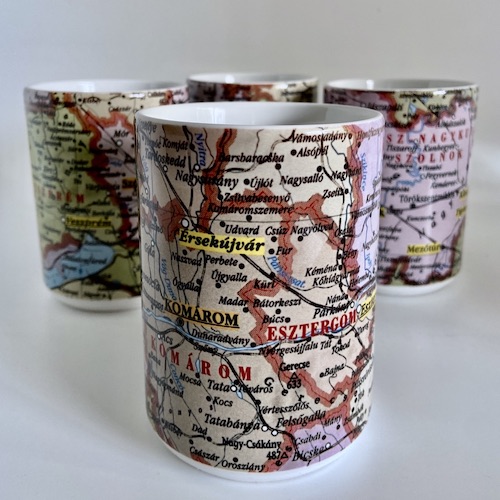There is nothing like a homemade noodle but, you have to build in a little extra time for the process. Or, in my case, a lot of extra time, because I am not proficient at making them. You can make a lot of different noodles at one time using just this one recipe.
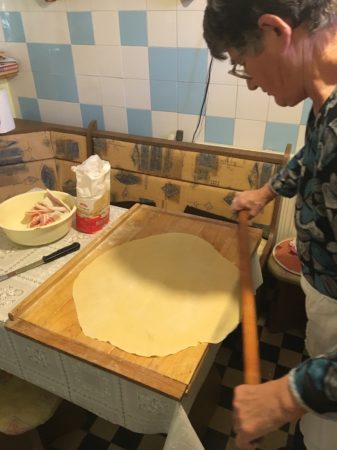
When we were in Tard, in northeast Hungary, a few years ago we happened upon a group of ladies who were making noodles for the day!
Hungarian Homemade Noodles
Ingredients
2 ½ cups flour
2 large eggs
Pour flour in large mixing bowl or on a pastry board. Make a well. Add eggs and work to blend and combine with your hands. Continue combining until you can knead into a hard lump. If too wet, add more flour. If too dry, add water (a little) and continue kneading until dough is smooth, shiny, and soft – about 10 minutes. Let rest 15 minutes.
Liz’s note: Of course, we all know eggs range in size. Older recipes say things like 2 eggs and don’t necessarily give a size that we find on egg cartons in the grocery store because so many people had their own chickens and their chickens laid different sized eggs. This is where taking the time to learn what the dough should feel like is more important than the exact measurements.
After rested, sprinkle pastry board with flour (lightly) take dough and using rolling pin, create a large flat disc. At this point, you can use a noodle machine or a rolling pin. Continue to roll until desired thickness is reached – about 1/8th inch. Let dry and rest about 15 minutes.
Cut into strips for broad noodles. For square noodles, cut into large squares or small squares, depending on if they are for a meal or for a soup. You can use this recipe for csiga shaped noodles as well as thread noodles.
To increase recipe, just keep doubling the eggs and flour. Do not use water or salt or you will not get the smooth elastic consistency that is the traditional noodle.
If you are making a day of it, get up early to get an early start on your project. Invite one or two friends to work with you. Make sure your beds are made. Have clean sheets ready so you can spread the noodles on them so they have time to dry. You can make a lot of different variations of noodles and everyone can go home with some!
This recipe is used with permission from Helen’s Hungarian Heritage Recipes, a cookbook by Clara Margaret Czegeny. One of our favorite cookbooks because so many of the processes are thoroughly explained! Order it here!
Here are some names of the noodles and their uses:
Small squares ~ kis kocka Very small squares (or diamonds) for clear soup.
Extra fine ~ Cérnametélt These “thread” noodles are extra fine for soup. We use them with clear broth soups though some people use it as an angel hair pasta for light veggie/pasta dishes. Cooks very quickly.
“Snail-shaped” ~ Csiga Csiga means snail. The csiga noodle was often made by hand (and still is) using a grooved board and a rolling tool. We love to use this little noodle in a clear broth beef or chicken soup or in Italian wedding soup.
Broad Noodles ~ Szélesmetélt Long, broad noodles for casseroles like cottage cheese w/bacon and noodles, and poppy seed or ground walnuts and noodles!
Large Squares ~ Nagy Kocka These are great for cabbage and noodles.
Lebbencstészta ~ Odd shaped, broken pieces used for Slambuc. This dish is made with bacon, noodles and potatoes and is cooked outdoors in a kettle or bogrács.
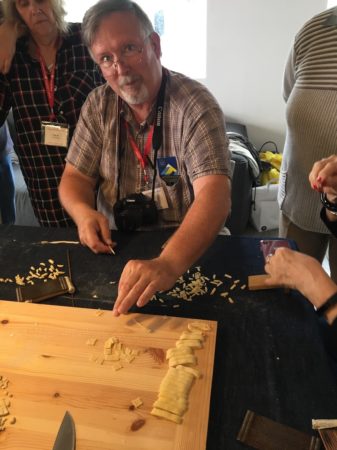
Don has heard all about “making csiga” for years and he finally got in on the fun when we returned to Tard with our tour group in 2019!
